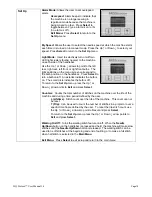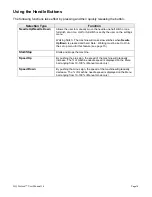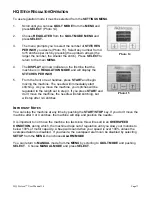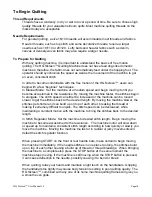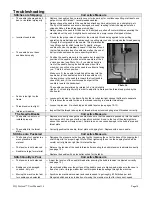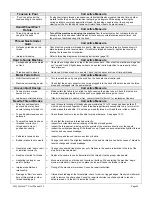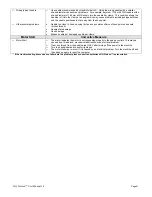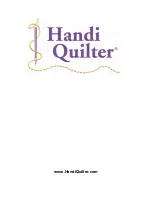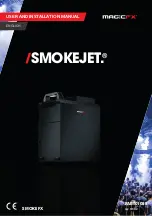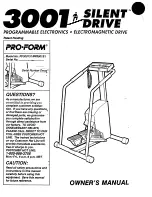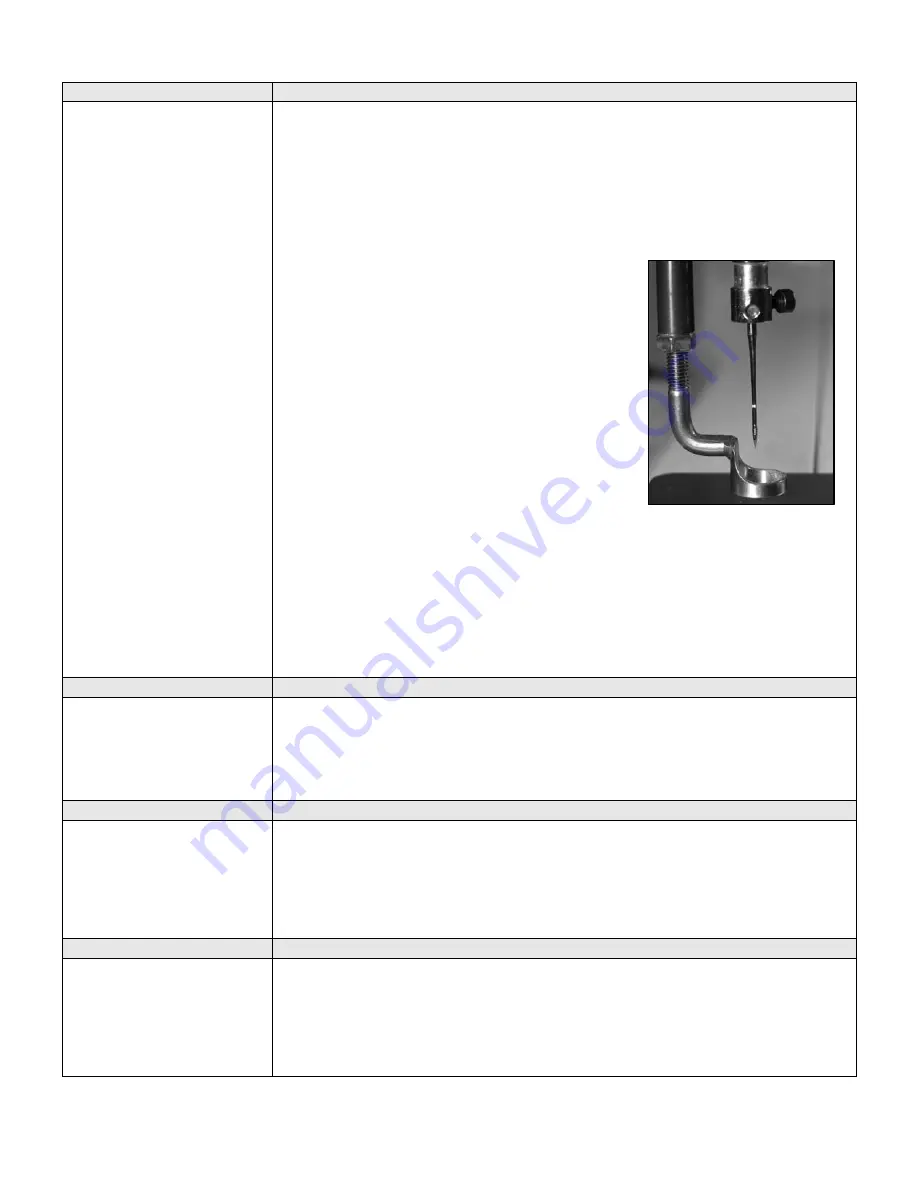
HQ Sixteen
™
User Manual 1.6
Page 19
Troubleshooting
Stitches are Skipping
Corrective Measure
The needle is damaged, dull,
bent, or installed improperly
Incorrect needle size
The needle has not been
positioned properly
Fabric is too tight on the
frame
Thread tension too tight
Improper threading
Replace the needle often, normally once or twice per day for continuous quilting or at least once
per quilt. Use HQ Sixteen
™
recommended needles.
Always change the needle if the needle has struck any hard object such as a straight pin, etc.
The tip of the needle can become damaged or burred, resulting in fabric damage as well as
skipped stitches, thread breakage or shredding.
Always change the needle if it has been hit, bumped or pulled off center while maneuvering the
machine about the quilt. A slightly bent needle can be a major cause of skipped stitches.
Check for the proper size of needle for the work and thread being applied to the quilting
operation. Some battings and fabrics used in quilting may constrict or impede the thread passing
through the front groove of the needle. This diminishes the
loop lift required for stitch formation. Typically, a larger
needle will solve the problem; however, it has been found
that certain smaller sizes of needles as well as the use of
ball pointed needles solve some specific problems.
Position the needle properly to the needle bar. Inspect the
position of the needle to make sure the needle is at the 6
o’clock position (see Photo 16)—If you stand directly in
front of the needle (facing the bobbin case side of the
machine), you will see the entire needle eye directly facing
you. This is 6 o’clock position.
Make sure (1) the needle is installed all the way into the
needle bar to the needle stop hole in the needle bar, (2)
the long groove in the needle is toward the front (bobbin
case side), and (3) the scarf/scooped out part of the
needle is toward the handwheel.
The needle can sometimes be rotated to 5 o’clock (slightly
right) or 7 o’clock (slightly left) in order to adjust for a more positive thread loop pickup by the
hook point.
Loosen pole tension on the frame. Fabric that is rolled too tight causes the fibers to separate.
This reduces the needle friction on the thread resulting in a smaller thread loop.
Loosen top tension. Re-check top and bobbin tension (see pages 12-13).
Inspect that the thread take-up lever, thread stirrup or tension spring are all threaded correctly.
The Needle Breaks
Corrective Measure
The needle is bent or not
installed properly
The needle hits the throat
plate
Replace or correctly change the needle. Make sure that the needle is pushed up into the needle
bar clamp until it can go no farther (visually check that it is up to the top of the stop/sight hole
above the needle bar clamp screw). Failure to do so can cause damage in the bobbin area and
throat plate.
Correctly position the needle, throat plate or hopping foot. Replace with a new needle.
Stitches are Puckered
Corrective Measure
The hopping foot applies too
much pressure to the
material
The tension is not balanced
Needle too large for material
Decrease the pressure on the hopping foot by loosening the nut at the base of the hopping foot
shaft. Adjust to the proper height. Note: When tightening the nut on the hopping foot shaft, be
careful not to tighten so tight that it rotates the bar.
Balance the tension of the needle thread after ensuring the bobbin tension is adjusted correctly
(see page 12).
Replace the needle with a size better suited for the fabric.
Stitch Quality is Poor
Corrective Measure
The tension is not balanced
Bobbin case is damaged,
corroded, dirty, etc
Moving the machine too fast
for needle speed selected
Adjust the tension of the needle thread after ensuring the bobbin tension is adjusted correctly
(see page 12).
Since thread slides over the surface of the bobbin case at a high speed, make sure the case is
free of any lint or foreign matter that could impede thread passage through the machine.
Synchronize machine movement and needle speed to get roughly 8-10 stitches per inch.
Elongated stitches are an indication of moving the machine too fast for the current speed.
Photo 16
Summary of Contents for HQSixteen
Page 24: ...www HandiQuilter com ...











